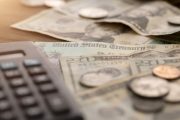
The jobs report released by the Labor Department on Friday confirmed what ADP reported on Wednesday: The U.S. economy generated more than a quarter of a million new jobs in April. As we noted on Wednesday in reporting on the ADP numbers, there’s no reason, outside of Federal Reserve interference, that the Trump economy cannot continue to grow and notch new employment records on a regular basis.
Friday’s report from the Labor Department’s Bureau of Labor Statistics noted at least one new record: “The unemployment rate declined by 0.2 percentage points to 3.6 percent in April, the lowest rate since December 1969.” It also reported that the number of unemployed persons in the economy dropped below six million for the first time in decades.
There were other important takeaways:
• Wages grew by 3.2 percent year-over-year, way ahead of price increases and rising at the fastest pace in nearly a decade;
• Jobs have increased for 104 straight quarters;
• Job openings exceed job seekers by more than one million;
• The U.S. economy remains on track to add two million new jobs for the ninth straight year;
• The economy has created more than 20 million jobs since the Great Recession ended in 2009;
• This growth continues despite various headwinds such as the slowdown in Europe, the continuing trade war with China, and Brexit;
• Factory orders jumped 1.9 percent in March, the best monthly showing since last August;
• Employers are not only raising wages to obtain the services they need, but are adding perks as well, including upgraded cafeterias, expanded day-care benefits, and subsidies for essentials such as gas and parking; and
• Fed Chair Jerome Powell is, for the moment at least, happy: “My outlook … is a positive one … for the U.S. economy for the rest of this year.”
That last point cannot be overemphasized. It was Powell’s determination to slow the Trump economy that caused it to slow slightly starting late last year and into early 2019. He claimed he was doing a preemptive strike against inflation, operating under the assumption that wage hikes would translate into prices hikes. But as real wages have increased, price increases have moderated, to his consternation, and so he has removed, at least temporarily, the threat of any further interest-rate hikes.
Without that threat, the economy righted itself, and now appears ready to sprint ahead for the foreseeable future.
The economy’s strength, as The New American has taken pains to point out, has left forecasters behind, with some still suggesting that the numbers from ADP and the BLS are misleading. Mark Zandi, Moody’s chief economist and establishment naysayer, said on Wednesday that “April’s job gains overstate the economy’s strength.” Following Friday’s report from the BLS, Zandi continues to wait for confirmation of his downbeat assessment.
On the other hand, Ian Shepherdson, chief economist for Pantheon Macroeconomics, adjusted upward his forecast for Friday’s report from the BLS from 200,000 to 240,000. He still got it wrong, but was closer.
Other forecasters have found it safer to comment after the jobs report came out. Carl Tannenbaum of Northern Trust said Friday’s report “looks like another ‘goldilocks’ performance” by the U.S. economy, while Joseph Brusuelas of accounting firm RSM tweeted: “Boom! Unemployment rate lowest since Vietnam draft era!”
Even Minneapolis Fed President Nell Kashkari looked at the jobs report and tweeted: “We’re [still] not at maximum employment.”
The jobs reports this week provide a snapshot of what’s happening with the U.S. economy. It suffered when the Fed threatened to continue to hamper it with ever higher interest rates and its program of draining reserves through its bond-buyback program. But once the Fed took its foot off the brake, and promised to keep it off, it didn’t take long for the economy to rebound.
The political implications are profound as well. Economic models point to a Trump blowout in 2020 thanks to the strong economy generating new jobs and rising wages. As Donald Luskin, chief investment officer of TrendMacrolytics, a research firm whose model correctly predicted Trump’s victory in 2016 when most others didn’t, said, “The economy is just so d*mn strong right now.… By all historic precedent the incumbent should run away with it. I just don’t see how the [Democrats’] blue wall could resist all that.”
Image: marchmeena29 via iStock / Getty Images Plus
An Ivy League graduate and former investment advisor, Bob is a regular contributor to The New American, writing primarily on economics and politics. He can be reached at [email protected].
Related article:
U.S. Job Growth Exceeds Estimates: 275,000 New Jobs Created in April



